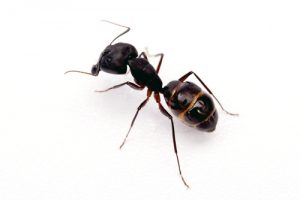What Does an Insect’s Nose Look Like?
By Chris Williams on August 28, 2012.
Do insects have a nose? What does it look like? There’s no doubt that insects are drawn from long distances to pheromone traps by the “smell” of the pheromone. Flies and yellowjackets and other annoying pests can clearly zero in on people food so they must be able to smell it. Blow flies can detect a dead body from up to a mile away. It’s not their vision, so it must be their nose.
What does an insect’s nose look like? And where is it? Actually, an insect’s nose looks just like its antennae—because they are one and the same. It’s the insects’ antennae that “sniff out” pheromones, food, egg-laying sites, and even pesticides.
Blow flies use their antennae to detect the smell of miniscule amounts of ammonia associated with decaying meat. A tiny, parasitic wasp uses its antennae to zero in on the “smell” of the tobacco moth larva in which it will lay its eggs. The large, comb-like antennae of the male luna moth can pick up the scent (pheromones) of a female of his species a mile away.
Antennae come in different styles and types, some are short and barely visible (house fly), others are longer than the insect itself (certain wood-boring beetles). Some are elbowed (ants), and some (like the male mosquito) are feathery. If you look through a high-powered microscope, you see that the surface of each antenna is covered with tiny sensory nerve cells that pick up odors. Antennae are amazingly sensitive.
Besides detecting smell, insect antennae serve as organs of touch—somewhat like a cat’s whiskers. That’s why they are sometimes called “feelers.” For some insects, antennae are also organs of hearing or taste. Without its antennae, an insect is in big trouble.